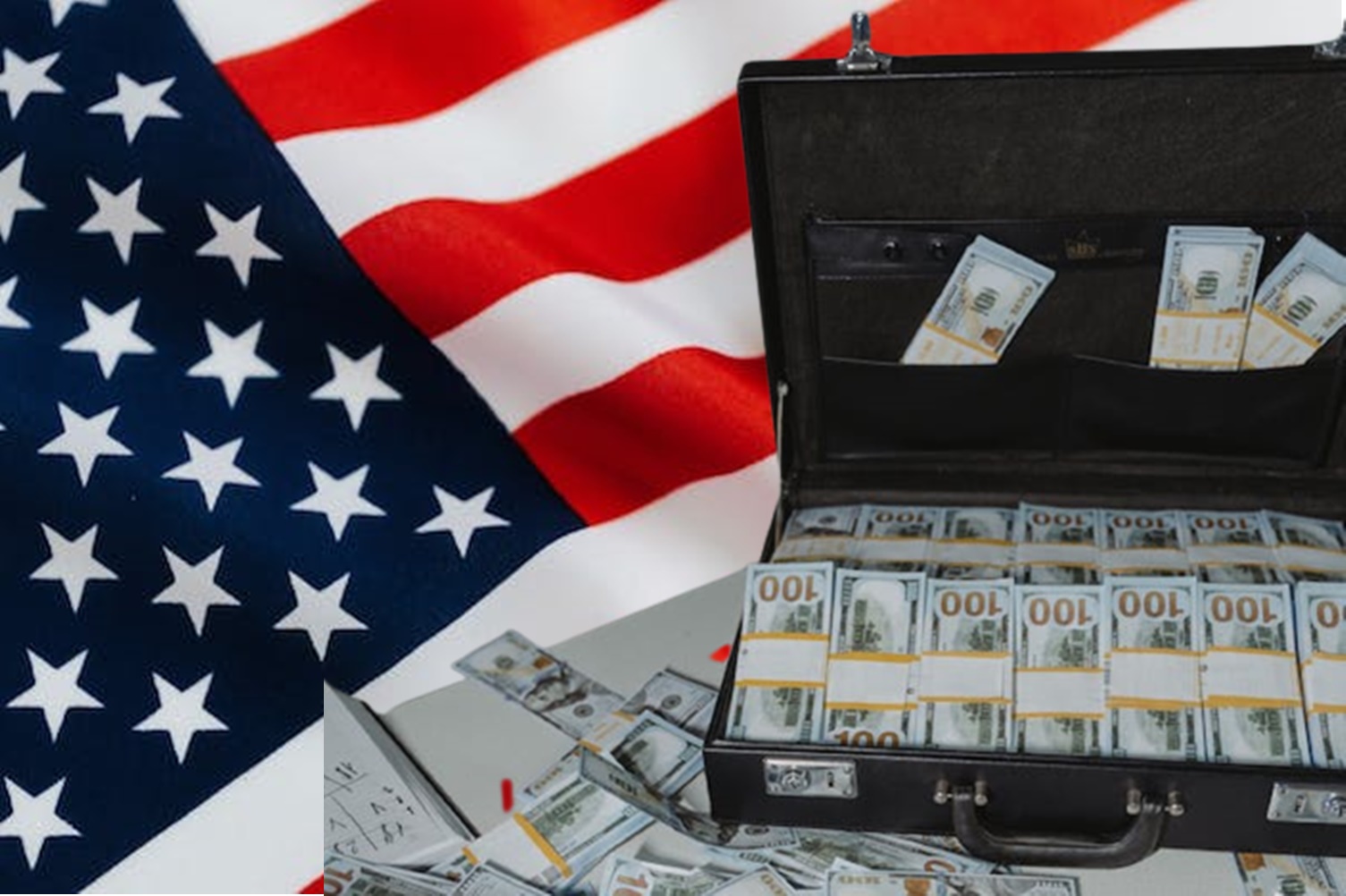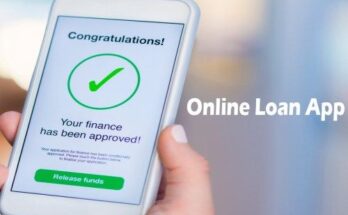Biden Student Loan Forgiveness: In an era where education is paramount, the Biden Student Loan Forgiveness initiative marks a significant step forward.
This groundbreaking plan aims to alleviate the burden of student loans for millions of Americans, fostering a more educated and financially stable society.
Background of Student Loan Debt in the USA
Before the Biden administration, the student loan debt in the USA had escalated to unprecedented levels, becoming a significant concern for graduates and the national economy. This section delves into the state of student loan debt prior to these recent policy shifts, providing a clear understanding of its historical context and the challenges it posed.
Key Statistics: Understanding the Scale and Impact
Magnitude of Debt: The total student loan debt in the USA had reached a staggering amount, affecting millions of graduates. This figure not only highlights the enormity of the issue but also underscores the burden borne by the young workforce.
Impact on Graduates: The overwhelming debt had profound effects on the financial stability and life choices of graduates. Many faced challenges in securing homeownership, saving for retirement, or even starting families, as their finances were significantly strained by loan repayments.
Economic Consequences: The ripple effect of such massive debt extended to the broader economy. It influenced consumer spending, investment in new businesses, and overall economic growth, as a significant portion of young adults’ income was diverted towards loan repayments.
Understanding this background is crucial in grasping the significance of the steps taken by the Biden administration and the ongoing debates surrounding student loan debt in the USA.
What is Biden Student Loan Forgiveness?
The Biden Student Loan Forgiveness program is a groundbreaking initiative launched under the administration of President Joe Biden. This program represents a significant shift in the approach towards handling student debt in the United States. The goal is to alleviate the financial burden on former students who are struggling to pay off their educational loans.
Key Features of the Program
Debt Relief Amount: The program typically offers a specific amount of debt relief for eligible borrowers. The exact figure can vary and is often subject to change based on governmental policies.
Type of Loans Covered: It’s crucial to understand which types of student loans are eligible for forgiveness under this program. This often includes federal student loans, but the details can differ.
Income-Based Eligibility: One of the central tenets of the program is its focus on borrowers with certain income levels. This ensures that the aid is targeted towards those who need it the most.
Eligibility Criteria for the Program
To qualify for the Biden Student Loan Forgiveness program, applicants must meet specific criteria:
Income Thresholds: Applicants must have an income below a certain threshold. This is to ensure that the program benefits individuals who are most in need of financial assistance.
Loan Status: The eligibility often depends on the status of the loan, such as whether it is in default or in good standing.
Educational Qualification: The level of education or the type of educational institution attended can also play a role in determining eligibility.
Differences from Previous Student Loan Forgiveness Programs
The Biden Student Loan Forgiveness program differs from previous initiatives in several key aspects:
Scope of Forgiveness: The amount of debt forgiveness offered can be more substantial compared to past programs.
Eligibility Criteria: This program might have more inclusive or different eligibility criteria in comparison to previous initiatives.
Policy Implementation: The way this program is implemented, including the application process and timelines, can vary significantly from past student loan forgiveness efforts.
The Biden Student Loan Forgiveness program is a significant step towards addressing the student debt crisis. It offers a beacon of hope for many borrowers, promising financial relief and a more manageable path to clearing their debts. As with any governmental program, it’s essential for potential applicants to stay informed about the latest updates and changes to maximize their benefits.
How to Apply for Biden Student Loan Forgiveness
Applying for the Biden Student Loan Forgiveness program can be a straightforward process if you are equipped with the right information and resources. This guide will walk you through the essential steps, necessary documentation, and offer helpful tips to ensure your application is successful.
Step-by-Step Guide on the Application Process
Check Eligibility: Before anything else, confirm that you meet the eligibility criteria for the Biden Student Loan Forgiveness program. This typically involves certain types of loans and income thresholds.
Gather Required Information: Prepare all necessary personal information, including your Social Security Number, Federal Student Aid (FSA) ID, and details about your income.
Complete the Application Form: Visit the official Student Aid website to access the application form. Ensure you fill out each section accurately.
Submit the Application: Once you have completed the form, submit it through the website. Make sure to keep a copy of the confirmation for your records.
Necessary Documentation and Deadlines
Required Documents: You will need to provide proof of income, loan statements, and any other documents that verify your eligibility.
Deadlines: Pay close attention to the application deadlines. Missing these deadlines could result in being ineligible for the program.
Tips for Ensuring a Successful Application
Double-Check Details: Ensure all the information you provide is accurate. Mistakes can delay the processing of your application or even lead to rejection.
Stay Informed: Keep up-to-date with any changes or updates in the program by regularly checking the official website or subscribing to updates.
Seek Assistance if Needed: If you’re unsure about any part of the application process, don’t hesitate to contact a financial advisor or the student aid office for guidance.
By following these steps, you can navigate the Biden Student Loan Forgiveness application process with confidence and increase your chances of having your student loan forgiven.
Benefits of the Biden Student Loan Forgiveness Program
The Biden Student Loan Forgiveness Program represents a significant shift in the landscape of higher education financing in the United States. This initiative has profound implications, both for individuals and the broader society. Here, we explore the key benefits of this program:
Economic and Personal Benefits for Individuals:
Reduced Financial Burden: One of the primary benefits is the alleviation of financial stress for graduates. By forgiving a portion of student loans, individuals find themselves with more disposable income. This relief can translate into increased savings, investments, or spending on essentials and personal interests.
Improved Credit Scores: Loan forgiveness can lead to better credit scores. Reduced debt means individuals are viewed more favorably by credit agencies, which can ease the path to securing mortgages or personal loans.
Enhanced Opportunities for Further Education: With the burden of existing loans diminished, individuals may feel more empowered to pursue further education or training, leading to better career prospects.
Increased Mental Well-being: The stress of large debts can take a significant toll on mental health. Loan forgiveness can bring a sense of financial freedom, contributing to improved mental well-being.
Broader Social and Economic Implications:
Stimulating Economic Growth: As individuals have more money to spend, there’s a likely increase in consumer spending, which can stimulate the economy.
Promoting Higher Education: The program makes the prospect of college more appealing. Knowing that a portion of their debt might be forgiven, more people might consider pursuing higher education, leading to a more educated workforce.
Addressing Income Inequality: Student loan debt disproportionately affects lower-income families. Forgiving student loans can be a step towards reducing this inequality.
Encouraging Entrepreneurship: With less debt, individuals might be more inclined to take entrepreneurial risks, potentially leading to new businesses and job creation.
However, the Biden Student Loan Forgiveness Program holds the potential for wide-ranging positive impacts. It not only offers immediate financial relief to individuals but also sets the stage for long-term economic growth and social advancement. This policy marks a significant step in addressing the challenges posed by the ever-rising costs of higher education.
Challenges and Criticisms of Biden’s Student Loan Forgiveness Program
Implementation Challenges
Implementing President Biden’s student loan forgiveness program has encountered several hurdles. One of the primary challenges lies in the sheer scale of the task. Managing the process of forgiving loans for millions of borrowers requires a robust, efficient system. Additionally, there’s the complexity of determining eligibility criteria, which involves assessing the financial status of individuals and aligning it with the program’s guidelines. This necessitates a level of bureaucratic oversight and technological infrastructure that is both time-consuming and resource-intensive.
Criticisms from Stakeholders
The program has faced criticism from various quarters:
Taxpayers: A significant portion of the criticism comes from taxpayers who are concerned about the financial implications of the program. There’s an ongoing debate about the fairness of using taxpayer money to forgive student loans, particularly among those who have either paid off their loans or did not attend college.
Non-Eligible Students: Students who do not qualify for the program have also voiced their concerns. This includes recent graduates who have loans but do not meet the eligibility criteria, or future students who will not benefit from current forgiveness plans. There’s a sense of inequity among these groups, as they perceive themselves to be at a disadvantage compared to those who will have their loans forgiven.
However, while Biden’s student loan forgiveness program aims to alleviate the burden of student debt for many, it is not without its challenges and criticisms. Implementing such a large-scale program is a complex endeavor, and the program has sparked debates about fairness and financial responsibility among various stakeholders.
Future of Student Loans in the Biden Era
The landscape of student loans is poised for significant transformations under President Biden’s administration. This anticipated shift has garnered widespread attention, particularly from current and prospective students, educators, and financial experts. Here, we explore the predictions and expectations for the future of student loans, focusing on potential reforms and policy changes.
Predictions for Student Loan Landscape
Increased Forgiveness Programs: Analysts predict that the Biden era could usher in more robust student loan forgiveness programs. This may include expanded eligibility for existing forgiveness schemes and the introduction of new ones, aimed at alleviating the financial burden on graduates.
Revised Repayment Plans: Expectations are high for the revision of repayment plans. These changes could involve more income-driven repayment options, offering greater flexibility and affordability to borrowers.
Interest Rate Adjustments: There’s speculation about potential adjustments to the interest rates on student loans. Lowering these rates could be a strategic move to make education more accessible and manageable financially.
Enhanced Borrower Protections: The Biden administration may strengthen borrower protections. This could involve more transparent lending practices and enhanced safeguards against predatory lending.
Potential Reforms and Policy Changes
Legislative Reforms: The administration might push for legislative reforms, aiming to overhaul the student loan system fundamentally. This could include changes in loan disbursement, repayment terms, and forgiveness criteria.
Increased Federal Funding for Education: A significant increase in federal funding for higher education is a potential policy change. This could reduce the reliance on student loans and make higher education more accessible.
Public Service Loan Forgiveness (PSLF) Expansion: The PSLF program might see an expansion or modification, potentially making it easier for public servants to have their loans forgiven.
Private Loan Regulation: There’s also the possibility of more stringent regulations on private student loans, ensuring better terms and conditions for borrowers.
However, the future of student loans in the Biden era could be marked by progressive changes aimed at reducing the financial strain of higher education. While these predictions and potential reforms are subject to political dynamics and legislative processes, they represent a hopeful direction towards a more equitable and accessible education system.
FAQs About Biden’s Student Loan Forgiveness Program
What is the Biden Student Loan Forgiveness Program?
The Biden Student Loan Forgiveness Program is an initiative introduced by President Biden to alleviate the financial burden of student loan debt. This program offers forgiveness for a certain amount of federal student loan debt under specific eligibility criteria.
Who is Eligible for This Loan Forgiveness?
Eligibility for this program generally includes individuals with federal student loans who meet certain income thresholds. This often involves proving that your income does not exceed a specific limit, which varies based on your filing status and other factors.
Does This Program Apply to Private Student Loans?
No, the Biden Student Loan Forgiveness Program is specifically for federal student loans. Private student loans are not eligible for forgiveness under this program.
How Much Debt Can Be Forgiven?
The amount of debt that can be forgiven varies. It typically depends on factors such as your income level, the type of loans you have, and your employment status. Exact details can be found on the official government website or through direct inquiries with loan service providers.
Will This Affect My Credit Score?
Forgiving student loan debt under this program should not negatively impact your credit score. In fact, it might positively influence your credit score by reducing your debt-to-income ratio.
Is Loan Forgiveness Automatic?
Loan forgiveness under this program is not automatic. Eligible borrowers must apply for forgiveness, meeting all the necessary criteria and submitting the required documentation.
Are There Any Tax Implications?
The tax implications of loan forgiveness can vary. It’s advisable to consult a tax professional for specific advice related to your individual circumstances.
How Do I Apply for the Forgiveness Program?
You can apply for the Biden Student Loan Forgiveness Program through the official website or by contacting your loan servicer. They will provide detailed instructions and the necessary forms.
Can I Receive Forgiveness If I’ve Already Paid Off My Loans?
Typically, individuals who have already paid off their student loans are not eligible for forgiveness under this program. However, recent payments made during specific periods might be eligible for reimbursement.
What Happens If I’m Denied Forgiveness?
If you’re denied forgiveness, you can seek clarification on the reasons for denial and explore other available options like loan consolidation, income-driven repayment plans, or other federal relief programs.
Conclusion
Reflecting on its impact, the Biden Student Loan Forgiveness program is more than just a financial aid package; it’s a transformative step towards educational equity and economic stability.
Its implications extend beyond the immediate financial relief, promising long-term benefits for both individuals and society at large.
The program stands as a testament to the commitment of addressing the challenges in higher education financing, setting a precedent for future reforms and policy considerations.


